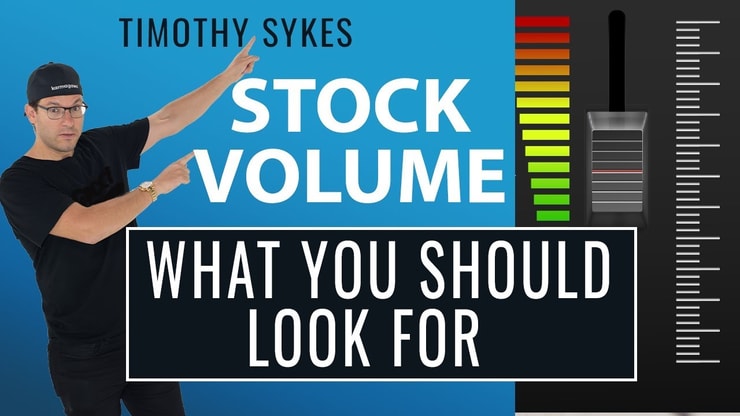The cheapest way to buy Walmart (WMT) stock is by learning how to execute your Walmart trade well. In this guide, I’ll tell you just how to do that!
Sounds like a tall order? It doesn’t have to be. Tens of thousands of people do it everyday.
I teach new traders everything I had to learn for myself when I started trading. That’s why I’ve written a beginner’s guide to the most affordable way to buy Walmart shares
I wouldn’t exactly call Walmart stock “cheap.” But if the price keeps increasing the way it has the past 10 years, its current price is going to seem like a bargain!
How to Buy Walmart Stock (NYSE: WMT)

Here’s how to buy Walmart stock.
1. Get a Good Broker that Lets You Trade Walmart Stock
This is the first step to buying any stock.
Choosing a broker isn’t the hardest thing. Here’s what I look for:
- Low commissions and fees
- Fast trade executions
- Access to a wide range of stocks
- Good customer service
- A great trading platform
My personal pick for the last item is StocksToTrade. StocksToTrade integrates with most of the top brokers, and it’s hell on wheels for the things traders really care about.
It should be good for trading — I helped build it.
StocksToTrade has dynamic charts, a selection of pre-built stock screeners, awesome add-on alerts services, and more. It has everything I use to trade in one easy place.
Try StocksToTrade today — only $7 for a 14-day trial!
2. Determine Your Goals and Your Risk
Every trader wants to make money — but unless you have a clear idea of your goals you probably won’t achieve them.
Some traders are looking for short-term gains. Others want to invest for retirement.
If you’re an active trader, the 100% annual return Walmart has had for the past 10 years might not be enough for you. I look to make 5–10% per trade. Most of my trades take only minutes.
Many long-term traders and investors are looking for exactly the kind of chart Walmart has. Walmart stock is what is called a “growth stock.” That means it has a track record of growth, which is usually a good sign for future gains.
The flip side of this is volatility. Make sure you only risk what you can afford to lose.
Your job as a trader is to profit from volatility, do NOT fall in love with any trade or asset as a trade is not profitable until you lock in your profits & getting emotional can muddy the waters. Similarly, it's difficult to cut losses fast if you become too emotionally involved
— Timothy Sykes (@timothysykes) December 7, 2021
3. Do Your Research Before Buying Walmart Stock
There are several ways to research stocks.
First, there are indicators of the company’s value, like its sales figures, debt, and more complicated indicators like price-to-earnings (P/E) ratio. These indicators all fall under the category of fundamental analysis.
Short-term traders tend to look at charts more than fundamental indicators. Short-term price moves and volatility tend to relate more to market sentiment than the stock’s “real” value.
This is called technical analysis. It sounds complicated, but it doesn’t have to be.
I tell my students to pay attention to volume. This is one of the best indicators of an upcoming price move.
I also pay attention to news. The value of Walmart stock is heavily tied to future growth projections. News can really affect this perceived value.
4. Have a Trading Plan
After you’ve done your research, you should have an idea of what you should pay for Walmart stock, and how much you want to profit off of your trade.
Having a concrete trading plan is the best way to keep from overpaying for Walmart stock.
Write down your preferred entry, and how much of a win you’re targeting.
You also need to define your risk. If the stock price falls below your risk — that’s the point you have to cut your losses!
Without a trading plan, you’re just gambling. That’s a good way to lose your trade.
If all this sounds overwhelming, I get it. That’s exactly why I created my Trading Challenge.
In the Trading Challenge, I teach students all the things I had to learn for myself. Things like creating a good trading plan and executing it well.
You don’t have to go it alone. If you’re willing to put in the work, I’m willing to help you grow into the best trader you can be.
If you think you’re ready to give your all, apply to my Trading Challenge today.
5. Enter Your Walmart Stock Order
Trading is 90% preparation. Now that the hard part is over, it’s time to place your Walmart stock order.
Here’s the step-by-step:
- Always use a buy-limit order. Market orders can execute for any price. This is not the cheapest way to buy Walmart stock — and it can be dangerous in stocks with less liquidity than Walmart.
- Cut your losses quickly. As soon as you hit your risk you NEED to exit the trade. Your number-one job is to protect your account. If a trade isn’t going your way, there’s a poor chance that it will course-correct at the last moment.
- Don’t get greedy. You always want to sell into strength. The way that I’ve made $7.4 million in my 20-plus years trading is by going for singles. That’s the best way to become profitable that I’ve seen in all my experience trading.
Should You Buy Walmart Stock?

You should buy Walmart stock if it fits your trading goals, and your research indicates that there’s an opportunity.
Through much of the past three years, Walmart stock has been at all-time highs. Some analysts think it’s in a clear uptrend, others think it’s due for a pullback.
I like the fact that it’s at all-time highs. That’s the first step on the way to creating new all-time highs.
There are other growth stock options out there! Check out our guides on the cheapest way to buy Apple (AAPL) stock, Facebook (META) stock, and Google (GOOGL) stock.
Pros of Buying WMT Stock
There are a number of advantages to buying Walmart stock.
- It’s Grown its E-Commerce Business: Walmart is the second-leading e-commerce brand in the U.S., adding enough to its overall take to stay neck-and-neck with Amazon in the retail space.
- 50 Years of Dividend Growth: If you’re an income-focused investor, Walmart’s commitment to increasing its dividends will be a bonus to its uptrending chart.
- Supply Chain Advantages: Walmart’s strong supply chain helps it to thrive even in recessions.
Cons to Buying WMT Stock
Here are the cons you should weigh when making this decision…
- They’re a Distant Second in E-Commerce: As much as Walmart grew their e-commerce business in recent years, Amazon put their growth to shame. This lead only seems to be growing.
- Its Dividend Yield Percentage Is Dropping. While the real-money payout is still rising, the dividend percentage has dropped to less than half its 2015 yield.
- Razor-Thin Profit Margins: Retail has always been a low-margin business, but margins are getting squeezed even more as Walmart navigates recessions and increased labor force scrutiny.





Leave a reply